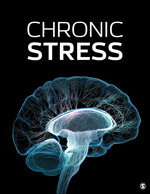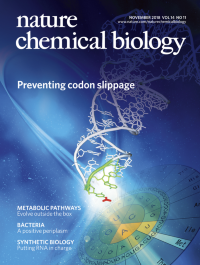 “Endocannabinoids are produced within the gastrointestinal (GI) tract and modulate energy homeostasis and food intake, at least in part, via vagally-dependent actions. The recent paper by Christie et al., [Christie, et al. J Physiol, 2019] demonstrate, for the first time, that cannabinoids exert biphasic effects on the mechanosensitivity of tension-sensitive gastric vagal afferents. At higher concentrations, anandamide increased vagal afferent sensitivity in a CB1 and TRPV1 receptor dependent manner. At lower concentrations, however, anandamide decreased afferent mechanosensitivity; while this was also dependent upon CB1 and TRPV1 receptors, it also appeared dependent upon signaling via the potent orexigenic neurohormone, ghrelin. These results provide further evidence to support the remarkable degree of neuroplasticity within vagal afferent signaling, and suggest that untangling the complex interactions of cannabinoid effects on food intake and energy homeostasis will require careful physiological and pharmacological investigations.”
“Endocannabinoids are produced within the gastrointestinal (GI) tract and modulate energy homeostasis and food intake, at least in part, via vagally-dependent actions. The recent paper by Christie et al., [Christie, et al. J Physiol, 2019] demonstrate, for the first time, that cannabinoids exert biphasic effects on the mechanosensitivity of tension-sensitive gastric vagal afferents. At higher concentrations, anandamide increased vagal afferent sensitivity in a CB1 and TRPV1 receptor dependent manner. At lower concentrations, however, anandamide decreased afferent mechanosensitivity; while this was also dependent upon CB1 and TRPV1 receptors, it also appeared dependent upon signaling via the potent orexigenic neurohormone, ghrelin. These results provide further evidence to support the remarkable degree of neuroplasticity within vagal afferent signaling, and suggest that untangling the complex interactions of cannabinoid effects on food intake and energy homeostasis will require careful physiological and pharmacological investigations.”
https://www.ncbi.nlm.nih.gov/pubmed/31707736
https://physoc.onlinelibrary.wiley.com/doi/abs/10.1113/JP279173
“A clear understanding of the mechanisms which mediate these events may provide novel therapeutic targets for the treatment of gastrointestinal disorders due to vago-vagal pathway malfunctions.” https://www.ncbi.nlm.nih.gov/pmc/articles/PMC6318799/



 “Brain trauma was clinically associated with increased osteogenesis in the appendicular skeleton. We showed previously in C57BL/6J mice that mild traumatic brain injury (mTBI) transiently induced bone formation in the femur via the
“Brain trauma was clinically associated with increased osteogenesis in the appendicular skeleton. We showed previously in C57BL/6J mice that mild traumatic brain injury (mTBI) transiently induced bone formation in the femur via the  “Memantine and marijuana smoking have been previously found to inhibit tremor in parkinsonian patients, however, the observed effects were relatively weak. The tremorolytic efficacy of memantine and
“Memantine and marijuana smoking have been previously found to inhibit tremor in parkinsonian patients, however, the observed effects were relatively weak. The tremorolytic efficacy of memantine and  “The endocannabinoid (eCB) system, i.e. the receptors that respond to the psychoactive component of
“The endocannabinoid (eCB) system, i.e. the receptors that respond to the psychoactive component of  “The anticancer effects of the omega-3 long chain polyunsaturated fatty acids (LCPUFA), EPA and DHA may be due, at least in part, to conversion to their respective endocannabinoid derivatives, eicosapentaenoyl-ethanolamine (EPEA) and docosahexaenoyl-ethanolamine (DHEA).
“The anticancer effects of the omega-3 long chain polyunsaturated fatty acids (LCPUFA), EPA and DHA may be due, at least in part, to conversion to their respective endocannabinoid derivatives, eicosapentaenoyl-ethanolamine (EPEA) and docosahexaenoyl-ethanolamine (DHEA). “L-dopa induced dyskinesia (LID) is a debilitating side-effect of the primary treatment used in Parkinson’s disease (PD), l-dopa. Here we investigate the effect of HU-308, a
“L-dopa induced dyskinesia (LID) is a debilitating side-effect of the primary treatment used in Parkinson’s disease (PD), l-dopa. Here we investigate the effect of HU-308, a  “The role of the endocannabinoid system in stress-related psychiatric symptoms has been investigated in many animal and human studies.
“The role of the endocannabinoid system in stress-related psychiatric symptoms has been investigated in many animal and human studies. “The CB1 receptor mediates the central nervous system response to cannabinoids, and is a drug target for pain, anxiety and seizures.
“The CB1 receptor mediates the central nervous system response to cannabinoids, and is a drug target for pain, anxiety and seizures. “Bone cancer pain (BCP) is a severe complication of advanced bone cancer.
“Bone cancer pain (BCP) is a severe complication of advanced bone cancer.